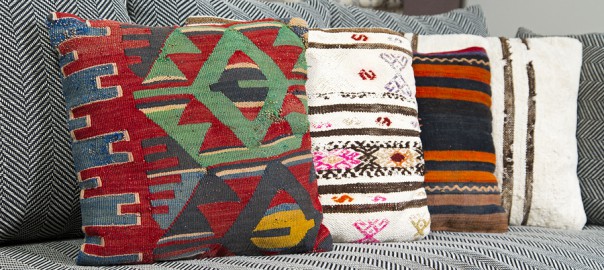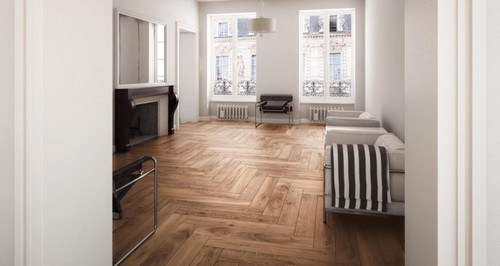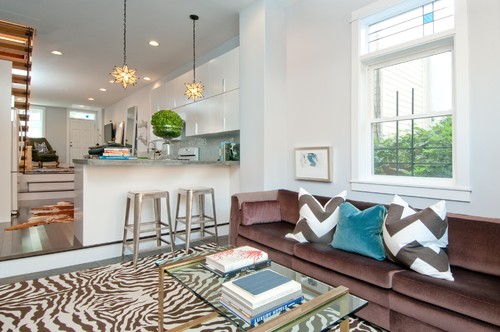Decorating With Herringbone
 Herringbone looks similar to the now popular Chevron pattern that zigzags in a sharp “V” which is why it is sometimes confused with Chevron. However, herringbone is a pattern made up of zigzagging rectangles as shown below in this beautiful kitchen. It’s a versatile pattern that has been used around the world for centuries, but we have some 21st century decorating ideas that you are sure to love. Let’s discuss them…
Herringbone looks similar to the now popular Chevron pattern that zigzags in a sharp “V” which is why it is sometimes confused with Chevron. However, herringbone is a pattern made up of zigzagging rectangles as shown below in this beautiful kitchen. It’s a versatile pattern that has been used around the world for centuries, but we have some 21st century decorating ideas that you are sure to love. Let’s discuss them…
Walls
In this tile pattern you can see that the rectangles don’t meet up at a sharp point like the Chevron pattern. Instead they are in a broken zigzag. Herringbone is considered a traditional pattern. To decorate with this pattern in a traditional style use neutral colors such as whites, grays or creams. The Chevron pattern is most popular in a variety of colors (commonly blues, turquoise and pinks) which are fun to use in accessories, but not a great idea for expensive tiling because it will go out of style sooner than you’ll want to remodel. A neutral herringbone however, will stay in style for years and years to come.
Flooring
Flooring should be installed in a way that flows with your home. Herringbone flows both lengthwise and widthwise. If you want to elongate a room you can have it installed lengthwise to make the room appear longer. Because herringbone already has a distinct design, having it installed diagonally (as pictured above) isn’t common, but certainly is eye-catching. The impact a herringbone floor makes depends on the size of tiles or hard wood planks used. Wood floors laid on in a herringbone pattern make for a subtle statement while black and white tiles in herringbone make a bathroom floor pop.
Textiles
Herringbone has been used in fabric for men’s suits and women’s clothing, but its popularity has more recently spread to home décor accessories. It’s a pattern that will complement any style of room depending on its color pallet. To go bold pick a textile with colorful contrasts in each zigzagging row. Choose reds and yellows for a bright room or blues and greens for a warm room. This pattern can go from pastels in a nursery to neutrals in a luxurious living room.


